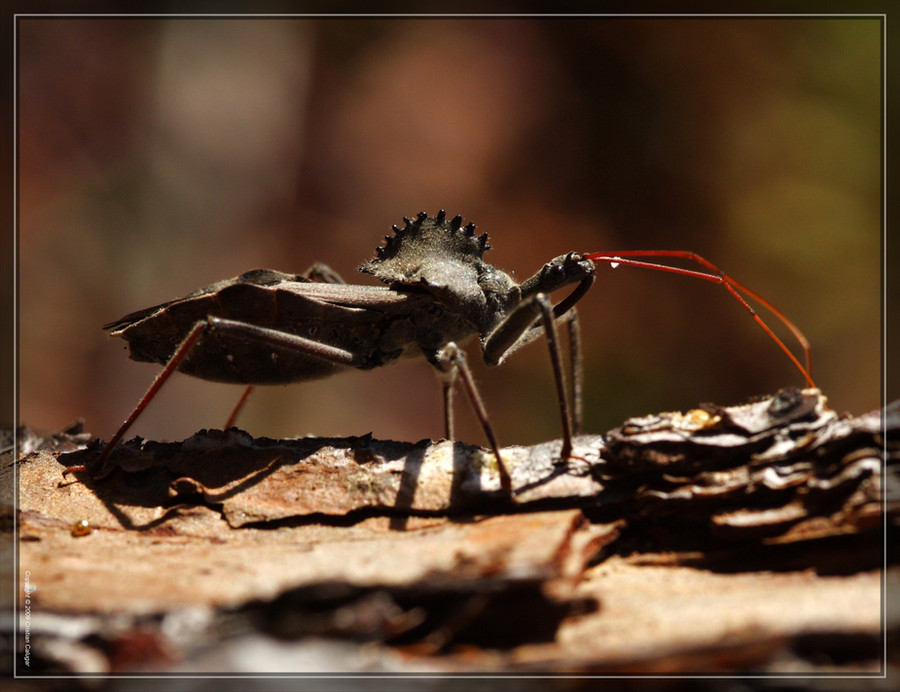HOME | DD
 Cristian-M — Wheel Bug 40D0031211
Cristian-M — Wheel Bug 40D0031211

Published: 2009-02-27 14:11:15 +0000 UTC; Views: 476; Favourites: 17; Downloads: 0
Redirect to original
Description
Wheel Bug (Arilus cristatus)The Wheel Bug, in the Family Reduviidae, is one of the largest terrestrial true bugs in North America, being up to 1 1/2 inches, or 38 mm, in length; it is the only member of its genus. A characteristic identifying structure is the wheel-shaped pronotal armour. They are predators upon soft-bodied insects such as caterpillars, beetles, etc.
It has one of the most developed mouth parts among true bugs. Its beak arises from the anterior end of its long, tubular head and unfolds forward. The bug plunges its beak into its victim, holding them with its front legs. It then injects enzymes into the victim, paralyzing them and dissolving their insides, and proceeds to drain all of the victim's bodily fluids. The bite of a wheel bug is painful and may take months to heal (sometimes leaving a small scar), so caution is advised when handling them.
The wheel bug is also noted to be very vicious in the wild, and cannibalistic behaviors between them have been noted; for example, nymphs preying on nymphs and the female feeding on the male after mating is concluded.
More info: [link]
Related content
Comments: 9

Il est impressionant cet insecte !! Existe-il en Europe ?
👍: 0 ⏩: 1

Non, seulement en l'Amérique du Nord.
Merci pour le 
👍: 0 ⏩: 1

Merci !!
Non merci à toi pour les photos et tes commentaires !!!
👍: 0 ⏩: 0

Whoa, so black widow spiders are not alone in feeding on their mates. They certainly don't take any pleasure in the existence of their mates. I wonder what's the evolutional advantage of this behavior? - Guaranteed survival of their offspring?
👍: 0 ⏩: 1

In the case of nymphs, they sometimes eat each other when there's no other food available.
When a female eats the male, after mating, there's an obvious advantage: if she has enough food, the eggs have a much better chance to develop.
Scientists are not sure why in some species the female occasionally eats the male after mating. Maybe the male is just annoying and that's one way to get rid of him...
👍: 0 ⏩: 1

The answer is obvious: the male tastes good.
👍: 0 ⏩: 1

Barry, I think you're right, as usual...
👍: 0 ⏩: 0



























